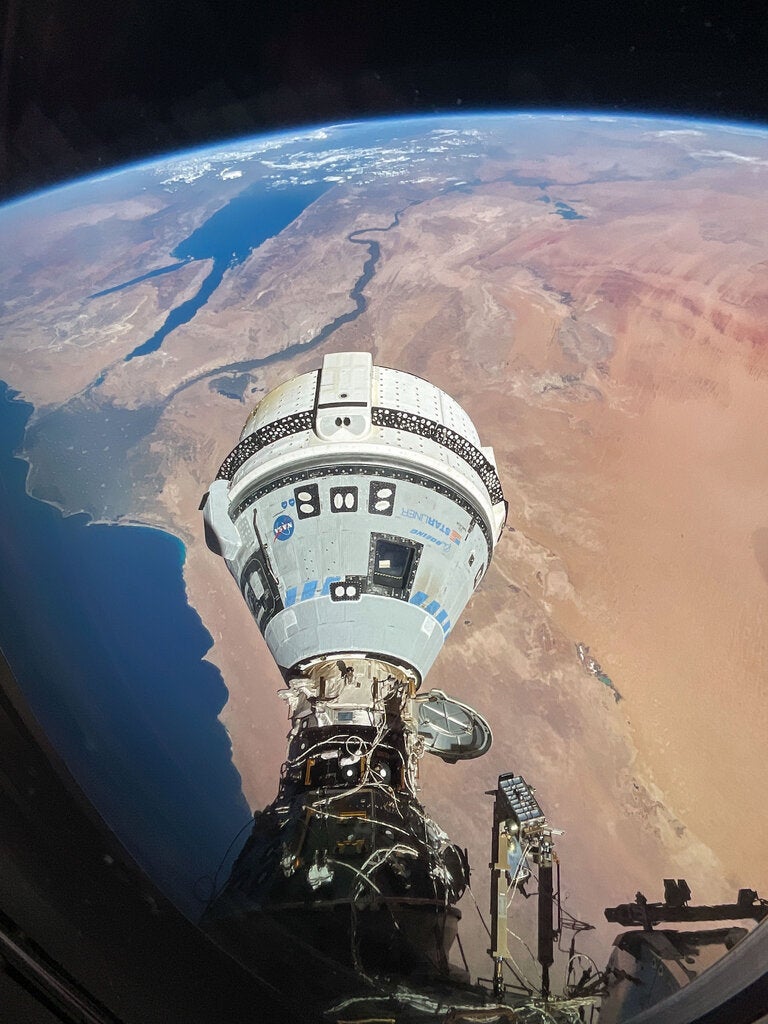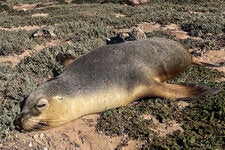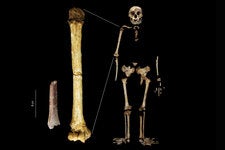Stranded in Space? NASA Doesn’t See the Starliner Astronauts That Way.
NASA doesn’t say the Boeing Starliner astronauts are ‘stranded’ on the space station, but it’s a word that a lot of people are using.
By

NASA doesn’t say the Boeing Starliner astronauts are ‘stranded’ on the space station, but it’s a word that a lot of people are using.
By

Specimens of what appear to be the largest eurypterid species found in Australia could shed light on the sudden extinction of the massive arthropods.
By

The scriveners of ancient Egypt were more than papyrus pushers, but they suffered many of the same repetitive ailments as desk jockeys today, a new study suggests.
By

A study adds strong evidence to the hypothesis that the deadly rock came from a family of objects that originally formed well beyond the orbit of the planet Jupiter.
By

Beware the Toxic and Explosive Blue Backpack This Termite Carries
Scientists studied the unusual chemical reaction used by a species of the insect in an act of self-sacrifice to save nests from invaders.
By

For Stonehenge’s Altar Stone, an Improbably Long Ancient Journey
A six-ton megalith at the heart of the archaeological site traveled more than 450 miles to get there, a new study concludes.
By

How the World’s Oldest Humpback Whale Has Survived Is a Mystery
Old Timer, a male first photographed in 1972, was spotted last month near Alaska, enduring in the Pacific Ocean while some other humpbacks have struggled in a changing environment.
By

Saving Australian Crocodiles by Yucking Their Yum
The aquatic reptiles cannot resist eating invasive toads that are toxic, so scientists gave the crocodiles a dose of nonlethal food poisoning to adjust their behavior.
By

Salmon Farms in Patagonia Face Growing Opposition
The Chilean industry’s expansion has drawn repeated challenges from environmentalists and Indigenous people of the region, and prompted calls for a moratorium.
By Lucy MeyerCasey Ann Smith and

Advertisement
How Science Went to the Dogs (and Cats)
Pets were once dismissed as trivial scientific subjects. Today, companion animal science is hot.
By

Their Job Is to Help You Grieve Your Pet
Though still rare, social workers in animal hospitals are growing in their ranks.
By Katie Thomas and

The Pet ‘Superheroes’ Who Donate Their Blood
Transfusions have become an important part of veterinary medicine, but cat and dog blood is not always easy to come by.
By

Why You’re Paying Your Veterinarian So Much
People have grown more attached to their pets — and more willing to spend money on them — turning animal medicine into a high-tech industry worth billions.
By

Are We Loving Our Pets to Death?
Pet owners are treating their animal charges ever more like humans. But that isn’t good for pets, or for us, many experts argue.
By

I Am the Walrus but This Fossil Was Not
Although an extinct animal was from a different group of marine mammals, an examination of fossils showed it evolved a way of eating that was very similar to that of modern walruses.
By

Move Over, Robots: Sea Lions With Cameras Can Map the Ocean Floor
Daphne, Phoebe, Iris and Pasithea demonstrated how marine mammals can help scientists understand mysterious places that humans may never visit.
By

How Glue Helps Frogs Out of Sticky Situations
You’ve heard of a “frog in your throat,” but probably not like this.
By

Fish That School Together Save Energy, Study Finds
Like Olympic cyclists, fish expend less effort when swimming in tight groups than when alone. The finding could explain why some species evolved to move in schools.
By

This Is What Happens When Tigers Try to Sneak Up on Small Bears
Videos in India show that sloth bears seem unaware of being stalked by the ferocious felines. When the tigers try to strike, the bears often get the better of them.
By
Advertisement
Scientists Find Arm Bone of Ancient ‘Hobbit’ Human
New fossils from Indonesia, including the smallest humerus ever found from an adult hominin, belonged to the tiny Homo floresiensis species, researchers said.
By

How Did Roses Get Their Thorns?
The “prickles,” as botanists call them, evolved in roses and other plants thanks to a single gene, a new study found.
By

A Test for Life Versus Non-Life
In a new book, physicist Sara Walker argues that assembly theory can explain what life is, and even help scientists create new forms of it.
By

The Chimps Who Learned to Say ‘Mama’
Old recordings show captive chimps uttering the word, which some scientists believe may offer clues to the origins of human speech.
By

Early Humans Left Africa Much Earlier Than Previously Thought
Scientists have found evidence of several waves of migration by looking at the genetic signatures of human interbreeding with Neanderthals.
By

Meet a Family That’s Betting the Farm on a Wild Idea. Literally.
After decades raising hogs in Iowa, they wanted a way out of factory farming. Their solution was a return to nature, and a lot of mushrooms.
By

Wind Beat Coal Two Months in a Row for U.S. Electricity Generation
The shift occurred as the cost of wind power and other renewable energy is rapidly declining and coal is being pushed out by natural gas.
By

An Indigenous Author Offers Ancestral Answers to Today’s Environmental Crises
Ailton Krenak was a child when his family was forced to leave their land in Brazil. Now, as a writer, he advocates for a path forward that looks to nature and inherited wisdom.
By

How Extreme Heat Is Threatening Education Progress Worldwide
Children today face many more extreme weather hazards that can undermine global gains in education.
By

How Close Are the Planet’s Climate Tipping Points?
Earth’s warming could trigger sweeping changes in the natural world that would be hard, if not impossible, to reverse.
By Raymond Zhong and

Advertisement

A biomedical researcher, he found that normal cells can divide only a certain number of times before they age — which, he said, explained aging on a cellular level.
By Clay Risen

In huge numbers, older people are taking gabapentin for a variety of conditions, including itching, alcohol dependence and sciatica. “It’s crazy,” one expert said.
By Paula Span

Disillusioned with grad school, Nigel Braun dropped out to film chemistry videos in his parents’ garage in Montreal. Then millions began viewing his whimsical and occasionally dangerous experiments.
By Vjosa Isai and Nasuna Stuart-Ulin

For over three years, long Covid has presented Joshua Roman with health challenges — and has indelibly shaped the music he makes.
By Pam Belluck and Emon Hassan

It’s the fifth summer of Covid, and most people seem eager to move on. We want to understand the pervasiveness of the ignorance-is-bliss attitude.
By Emily Baumgaertner

Like most countries, the U.S. has no comprehensive national system for monitoring disease in companion animals — which leaves pets and people at risk.
By Emily Anthes

Shola, who assisted with search-and-rescue operations in the U.K., has moved to her second act: saving other English Shepherds from blindness.
By Amelia Nierenberg

The virus is evolving, and the newest version spreads more often through heterosexual populations. Sweden reported the first case outside Africa.
By Apoorva Mandavilli

In an experiment that surpassed expectations, implants in a patient’s brain were able to recognize words he tried to speak, and A.I. helped produce sounds that came close to matching his true voice.
By Benjamin Mueller

After agency officials said last week that a decision was pending, they said on Wednesday that deliberations were still taking place.
By Kenneth Chang
Advertisement
Advertisement